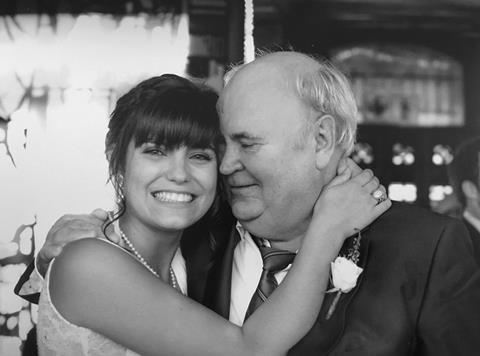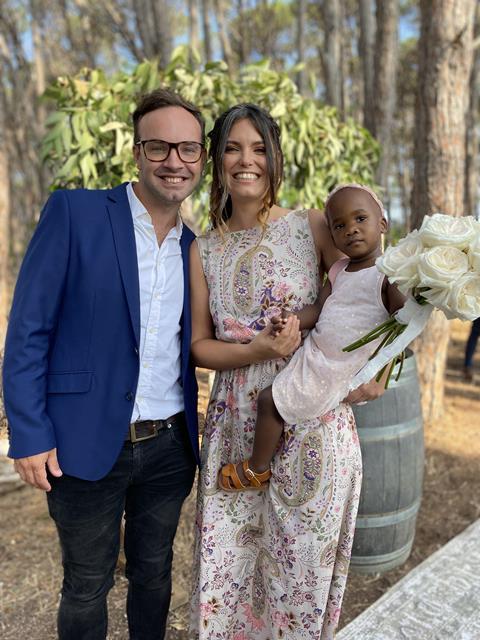Sarah Portal has faced significant losses since an early age, including friends and family members.

My first experiences of grief and loss was when I was eleven years old. A childhood friend was raped and strangled to death in South Africa. Then, sadly, I lost another friend a few years later to the same violent crime. When I was 20 years old I lost my sister in an accident. The following year my grandmother, who had helped my single mum raise me in early childhood, passed away and the year after that my mother died from breast cancer. Five years later a young person whom my husband and I had been living with died in a car accident. His death destroyed me and, in the aftermath of this and all the other losses, I found myself in a very dark and desolate place in my soul.
The compounded trauma finally hit its threshold and I was diagnosed with post-traumatic stress disorder (PTSD) that significantly affected my brain function, including but not limited to: loss of memory, attention deficits, the inability to access the problem-solving part of my brain and confusion in my ability to discriminate sound – making me sensitive to auditory stimulation. Together with the help of my GP, medication, a trauma therapist, a neurologist and a strict daily recovery programme I drew up for myself, I recovered and healed. I began to engage with the world again feeling a little more like myself. But then my father took his own life in 2020, leaving my brother and I as the only two left from my family of origin. I was 31 years old.
The nature of my father’s death, and the complicated relationship we had had during his life, resulted in a slow and long grieving process. Suicide is a particularly complex loss to process as you are confronted with the horror of what has happened as well as feelings of deep self-doubt and uncertainty muddling through questions of: “Did I fail them? Was I not enough for them?” Unfortunately, my brain reverted to its learned coping mechanism and seemed to go back into the freeze mode it had adopted previously, and I had to begin the process of recovery and retraining my brain again.

The long, winding journey of grief
I was so young when I lost my friends and the violence of it was more than an eleven-year-old’s brain could process, so I learned to supress grief. I adopted a coping mechanism of pushing through and ‘just keep going’, which resulted in unprocessed grief after I lost my family. It was only when the young man died in the car accident that my body could no longer physically contain the grief and trauma and I finally stopped, forced by my body’s shutdown. I was signed off work for six months and during that time went on a deeper healing journey through my pain and losses.
In addition to the professional help I sought, I had to learn to get what was locked inside out. First, I had to create space to feel the pain and process it, to cry and remember. Then I took a ttwo-pronged approach, physical and emotional. Physically, I began to exercise in order to help my body to release pent-up energy and healthy natural hormones. I then learned a form of trauma therapy called TRE (tension and trauma release exercises), which activates muscles in the body to tremor, releasing where the body has physiologically imprinted trauma tension. This therapy was one of the single-most effective treatments for the PTSD symptoms I had been experiencing, including flashbacks, nightmares, grinding teeth, involuntary shaking, anger outbursts and an extreme jumpiness.
Emotionally, I began to create. I had to take what was on the inside and reform it into something else before it suffocated me. I wrote poetry, giving words to my feelings. I painted, giving imagery where words failed. I wrote letters, verbalising all of the unexpressed love I would never be able to tell the deceased, and I wrote the story of what had happened to me. The whole story.

God’s ‘withness’
And then there was Jesus. I was raised knowing him and from my earliest memory had had a deep love for God. I believed with my whole heart that God loved me and that he was good and that the words of Jesus were true. And yet, when we prayed for my mother to be healed, cshe was not. My theology was shaken and I went on a journey to reframe how I understood God’s love when those we love suffer and die and he does not answer our prayers.
While my prayers were not answered in the way I had hoped and believed for, in my wrestle with God what I came to recognise was that his love was never absent, for a single moment, from me or my loved ones. I could see the golden thread of his presence with me every step of the way, through the comfort of others, prophetic words shared by others, through the strength he gave me to sit beside the ones I loved and slowly watch them die. I came to call this reality of the presence of God’s love, his ‘withness’. I felt no existing word captured this thing I had come to understand, for it was not the kind of presence that some Christians talk about to describe a physical manifestation, or the supernatural power of God through healings or deliverance. It was not the reality of answered prayers, revealing God’s presence. It was the deeper presence of his being alongside me in my deepest grief. It was his withness.
In my wrestle with God what I came to recognise was that his love was never absent
As I explored scripture I came to see how frequently God says “I will be with you”, in contexts where suffering did not abate. I saw what it meant for Jesus to be called Emmanuel “God with us”, both in the flesh but also when he died and sent his unseen, invisible Spirit to live within us. As I looked back over my life, I came to view it through the imagery of Kintsugi, the Japanese art of repairing broken pottery by using a kind of gold clay, giving the repaired piece both greater strength and beauty. I saw the losses and tragedies I had experienced as the broken pieces of my soul, and the undeniable love of God, expressed as withness, the golden clay strengthening me and bringing forth beauty.

Facing the pain with Jesus
I have learned that time does not heal, not really. Our pain does not become less and we don’t suddenly one day wake up and love our loved one less. But with time, we grow bigger than our pain. One way of viewing this is seeing ourselves as a blue dot and our grief as a red dot that is bigger than us. If we choose to do the work and face our grief, the blue dot outgrows the red dot. Though the red dot will always be there, it becomes encompassed by the blue dot, becoming a part of it. Similarly, if our loss is a tennis ball shoved into a jam jar, bouncing around hitting up against the sides, with time, as we process our pain, the jam jar grows bigger, the thuds to the side become less frequent and the feeling changes with time. Always present, but bearable. Our hearts grow big enough to contain the pain and we learn to live with it. If we choose to take the hand of Jesus and walk through the valley of the shadow of death, we will make it to the other side.
If you are a fellow pilgrim on the pathway that is grief and loss, trust Jesus with your pain and allow him to give you the courage to face it. I know it is terrifying. Ask him to reveal to you his withness. Exercise, see a doctor or a therapist if you need to; help your body to regulate before you do anything else. Then create space. Take time off if you are able. Write, paint, go to places of remembrance, tell your story. Get the pain on the inside out. Allow the life of the one you have lost to form you into something stronger and more beautiful than you ever imagined. With time you may even find that the grief of losing your loved one is overshadowed by the gratitude that while they were on earth you got to be part of their lives. And when the thud of loss hits your soul, you will recognise it not as pain but as love.
What to do in grief
• See a professional If you know you are struggling, don’t be afraid to see a doctor or a therapist to help you begin your process.
• Regulate your body Exercise, engage in therapies that work to release trauma in the body– breathing exercises are extremely helpful too.
• Create space Give yourself time to actually feel your feelings and a safe space to remember your memories.
• Cry Let all that love locked inside come out. If it’s there, it needs to come out, otherwise it will find its way, often through anger.
• Create Write your story, poetry, letters, paint. In whatever way works for you, give language to the void left in your soul.
• Withness Ask God to show you where he is in this moment.
Connect with Sarah and The Beautiful Withness @thebeautifulwithness and thebeautifulwithness.com



























No comments yet